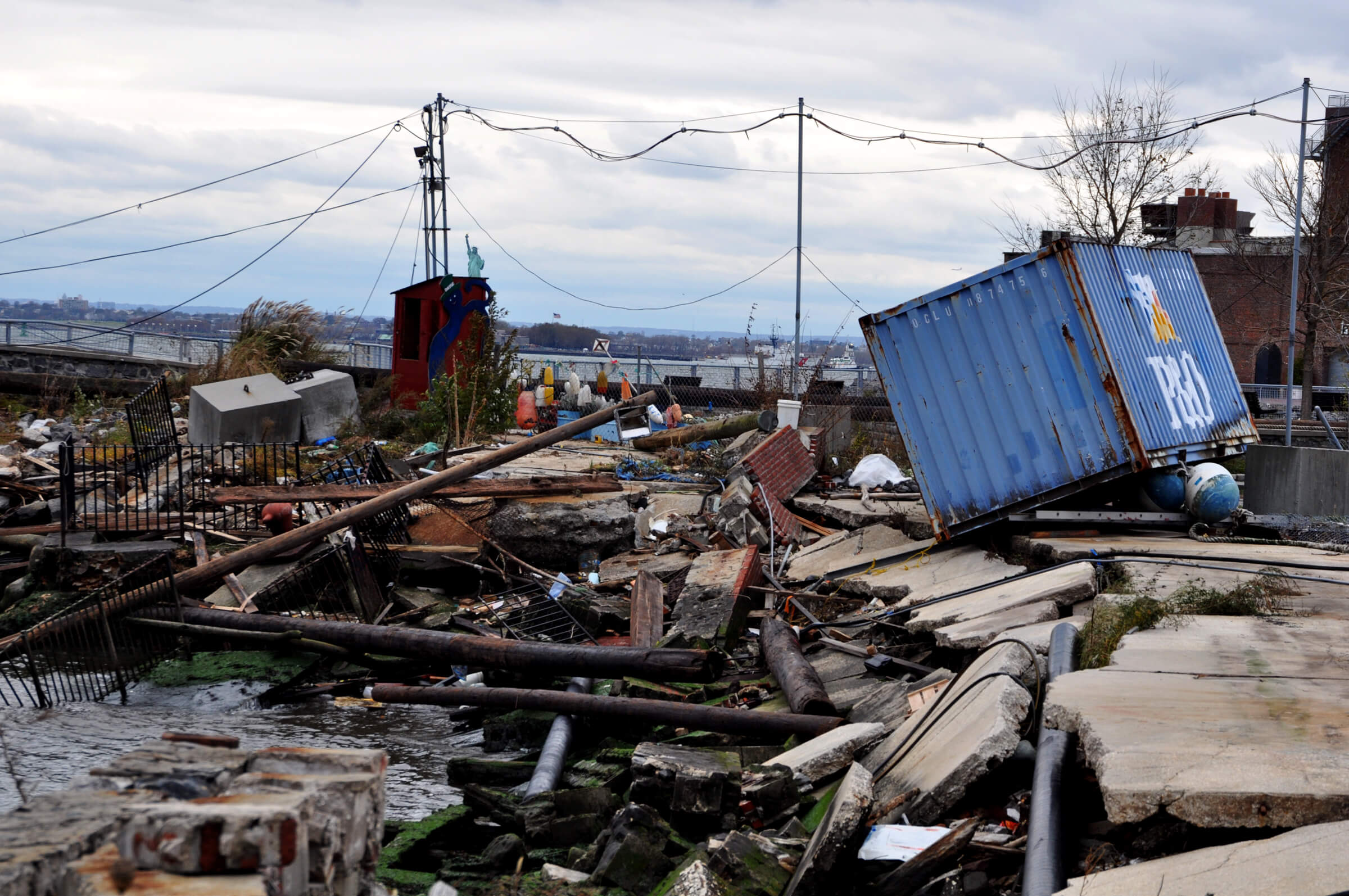Dozens of storm-tough public projects launch under new NYC climate resiliency pilot program
New York City Mayor Bill de Blasio announced yesterday the launch of a new program to kickstart a slew of planned building and infrastructure projects across the five boroughs under the city’s Climate Resiliency Design Guidelines. Specifically developed to ensure that these vital public resources withstand and bounce back from extreme weather events—severe heat, storm surge, intense rainfall, and more—brought on by the worsening impacts of climate change, the guidelines cover a wide swath of project typologies. The ones announced yesterday range from parks and playgrounds, schools and libraries, to bridges and roads, and the 40 pilot projects fall under the purview of 23 different city capital agencies including the New York City Economic Development Corporation (EDC), New York City Fire Department (FDNY), New York City Department of Transportation (DOT), and New York City Housing Authority (NYCHA).
As detailed in an announcement released by the Mayor’s Office, all 40 pilot projects, which range in budget from $3 million to $1 billion, will “apply resilient design principles from the very beginning of their design” while over 40 percent of them will be constructed in “environmental justice areas.” Projects were selected for the five-year pilot program based on a “rigorous process” that took into consideration factors including climate exposure, equity, and project scope.
“Climate change is happening now and we have the guide we need to ensure our public infrastructure is protected in New York City,” said de Blasio in a statement. “Roads, hospitals, public housing, and buildings need to be designed with the impact of extreme weather in mind and the NYC Climate Resiliency Design Guidelines will make sure that happens.”
In recent months, the city has been battered by a series of major rainstorms including the moisture-packed remnants of hurricanes Henri and Ida, the latter of which unleashed catastrophic flooding that shut down much of the subway system and claimed the lives of 13 people within the city and many more across the region.
The pilot program serves as a test run of sorts for Local Law 41, which was passed by the City Council this past March. Under Local Law 41, the city will develop a resiliency scoring system for all city-funded construction projects that will dictate how they are designed and sited; by 2026, all public projects must meet a set of rigorous resiliency benchmarks that “will certify their preparedness for extreme weather threats” according to the city.
As mentioned, the projects participating in the pilot program are a diverse bunch spanning all five boroughs. They include the renovation of FDNY Engine 91 in East Harlem, improvements at Haffen Park in the Bronx, the reconstruction of the Hunters Point South ferry landing in Queens, an affordable housing project in the Gowanus section of Brooklyn, the expansion of Jackson Heights Library in Queens, the reconstruction of the playground at Manhattan’s Thomas Jefferson Park, and more.
“The NYC Climate Resiliency Design Guidelines pilot program is a massive step forward in our work to build a more resilient New York City,” said Jainey Bavishi, director of the Mayor’s Office of Climate Resiliency, which developed the guidelines, in a statement. “Following the five-year pilot, all City buildings and infrastructure projects across $90 billion in planned capital spending will be built to withstand future flooding and heat, ensuring that New Yorkers are safer, infrastructure lasts longer, and taxpayer dollars go further.”



